
Let's talk Xoloitzcuintles
Standing out from the crowd is a breeze for the Xoloitzcuintle. They have a name that already puts them at the head of the pack (it’s pronounced “show-lo-eats-queent-lee”) and a physicality that helps keep them there. Hugely common in their native land of Mexico, the breed is often referred to as the Mexican Hairless dog for their near absence of fur. The Xoloitzcuintle may sound complex but those who take to this sweet and energetic breed know that they are one of life’s simple pleasures.Official name: Xoloitzcuintle
Other names: Mexican Hairless, Tepezcuintli
Origins: Mexico

| Drooling tendencies |
|
Warm weather? | |
| Shedding level | Suited to apartment living? | ||
| Energy level (high, low, medium) *: | Medium | Family pet? * |
|
| Compatibility with other pets |  |
Can stay alone?* |
* We advise against leaving pets alone for long stretches. Companionship can prevent emotional distress and destructive behaviour. Speak to your veterinarian for recommendations.
Every pet is different, even within a breed; this snapshot of this breed’s specifics should be taken as an indication.
For a happy, healthy and well-behaved pet, we recommend educating and socialising your pet as well as covering their basic welfare, social and behavioural needs.
Pets should never be left unsupervised with a child.
All domestic pets are sociable and prefer company. However, they can be taught to cope with solitude from an early age. Seek the advice of your veterinarian or trainer to help you do this.
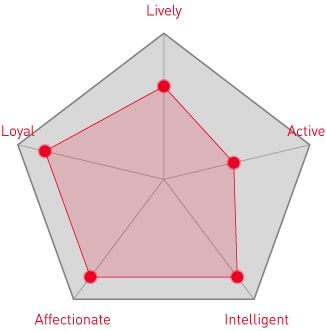

| Baby age: | Birth to 2 months |
| Puppy age: | 2 to 10 months |
| Adult age: | 10 months to 8 years |
| Mature age: | 8 to 12 years |
| Senior age: | from 12 years |
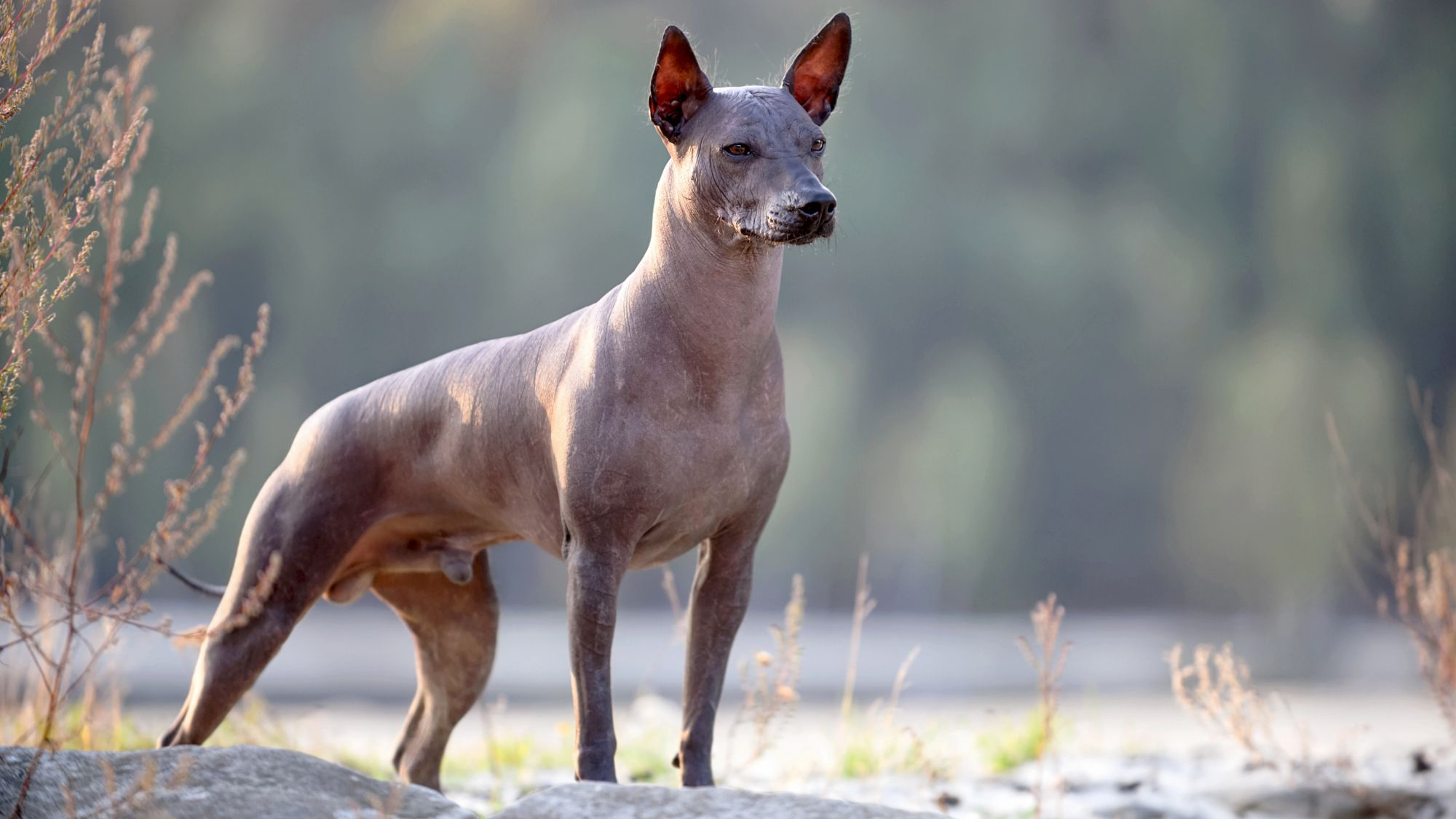
1/7
Get to know the Xoloitzcuintle
All you need to know about the breed
Sprightly and alert, the Xoloitzcuintle is no doubt unique among breeds. They’re said to be one of the first dogs to inhabit North America, dating back 3,000 years to the time of the Aztecs. Xoloitzcuintle are hugely popular south of the border but not as known north of it.
Then there’s the array: Three types of the Xoloitzcuintle breed exist – toy, miniature, and standard – and two coat types—hairless and coated, despite the breed often being called the Mexican Hairless dog. The hairless variety – a genetic mutation – possesses a leather-like coat; the coated variety has short hair, longest on their feet and face, and even a mohawk-like streak on the top of their head.
And those ears! They’re just the perfect topper to the Xoloitzcuintle’s long, lithe body. Their forever-furrowed brow may signal to some that the Xoloitzcuintle is anxious but it’s only a sign that they’re on the alert, generally for their family, whom they bond to significantly. They are an ancient breed, so the need to protect their pack and home is ingrained. They can be standoffish with newcomers until they get well-acquainted.
Training a Xoloitzcuintle early on will help curb their tendency to be a little stubborn. The breed is incredibly energetic, and has a strong prey drive. Introduce your Xoloitzcuintle to new furry friends in puppyhood and they’ll adjust to having them about.
And finally, that name! “Sho-lo-eats-queent-lee.” As complex as it is, this warmhearted breed is anything but, and great for seasoned and novice owners alike.
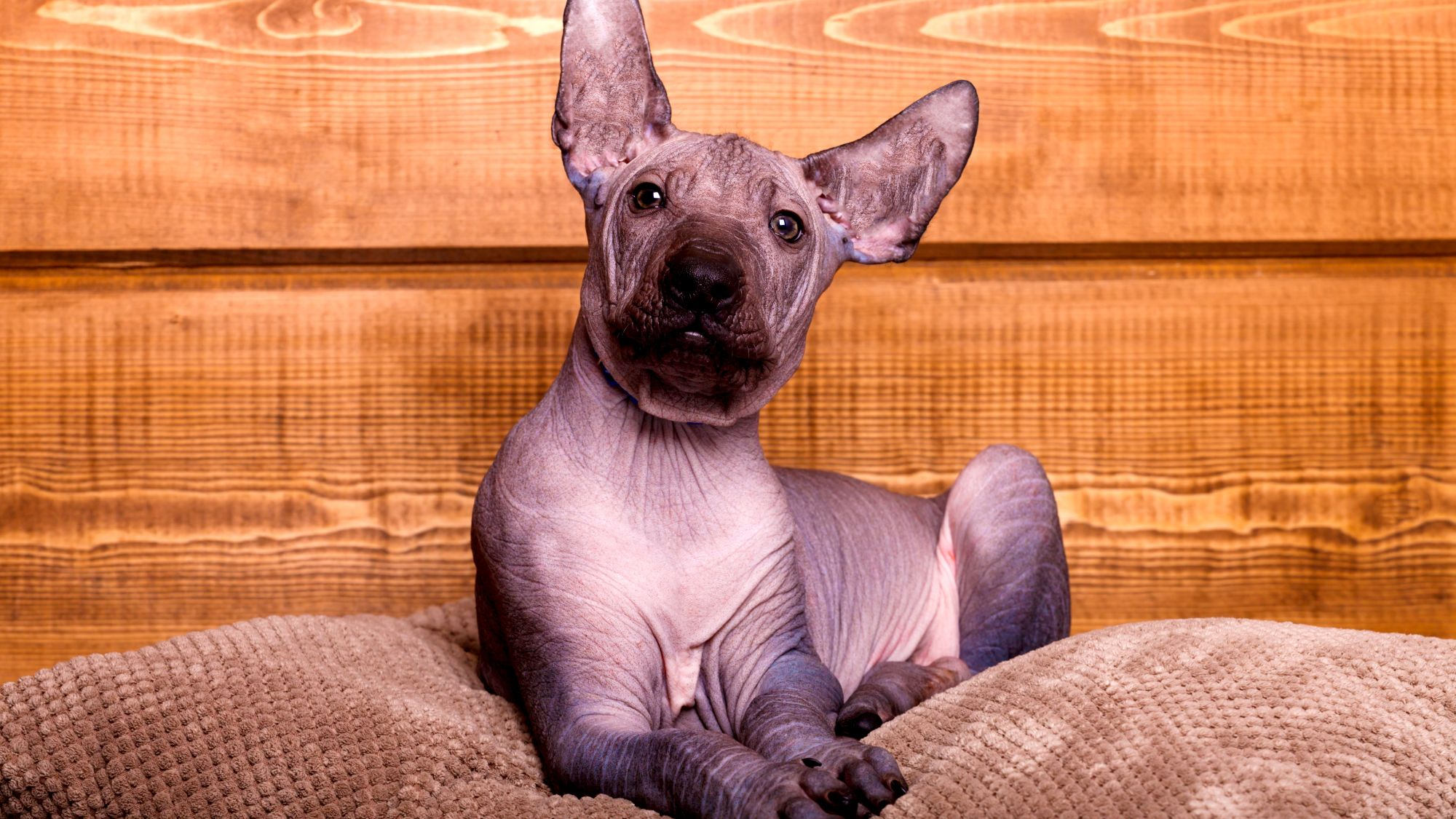
2/7
2 facts about Xoloitzcuintles
1. Hot dog
The Xoloitzcuintle has been thought through the ages to have healing powers: With skin that’s hotter to the touch than that of other breeds (it’s the same temp, but feels warm with the lack of hair), those who were ill would hold the dog close, thinking the heat could help give comfort against maladies like arthritis, rheumatism, and migraines.
2. A rare specimen
If it’s a rare breed you’re after, the Xoloitzcuintle is the one for you. There are approximately 6,000 of the dogs in the United States, while worldwide approximately 30,000 are registered with the American Kennel Club, England’s Kennel Club, and the Fédération Cynologique Internationale combined.
History of the breed
What would the world be without the very one-of-a-kind Xoloitzcuintle? This storied breed started life in the ancient Aztec world in Mexico 3,000 years ago where they were named for Xolotl, the Aztec’s dog-headed god of fire and escort for the dead to the underworld. Equally sacred status was given to the canine, so much so that when their owners died, the dog was sacrificed and buried along with them, acting as a guide to the next world.
The breed was recognised by the American Kennel Club (AKC) as far back as 1887. In 1940, a Xoloitzcuintle won an AKC championship and desire for the breed soared. They were depicted in the artwork of Mexican artists Diego Rivera and Frieda Kahlo. Despite the AKC taking the dog out of registration in 1959 as a result of so few of them being registered, they were reinstated in 2011.
The modern-day Xoloitzcuintle is a trusted companion and continues to be a cherished breed throughout Mexico.

4/7
From head to tail
Physical characteristics of Xoloitzcuintles
1. Ears
Large, wing-like ears, usually very erect.
2. Head
Wedge-shaped distinctive head, elegant in appearance, tapers to end of muzzle.
3. Body
Slim body, thin limbs, athletic.
4. Tail
Rat-like tail, tapering to end.
5. Coat
Coat can be hairless or almost so. Hair is short, flat, close-fitting, appearing on top of head, neck, feet, and tail.
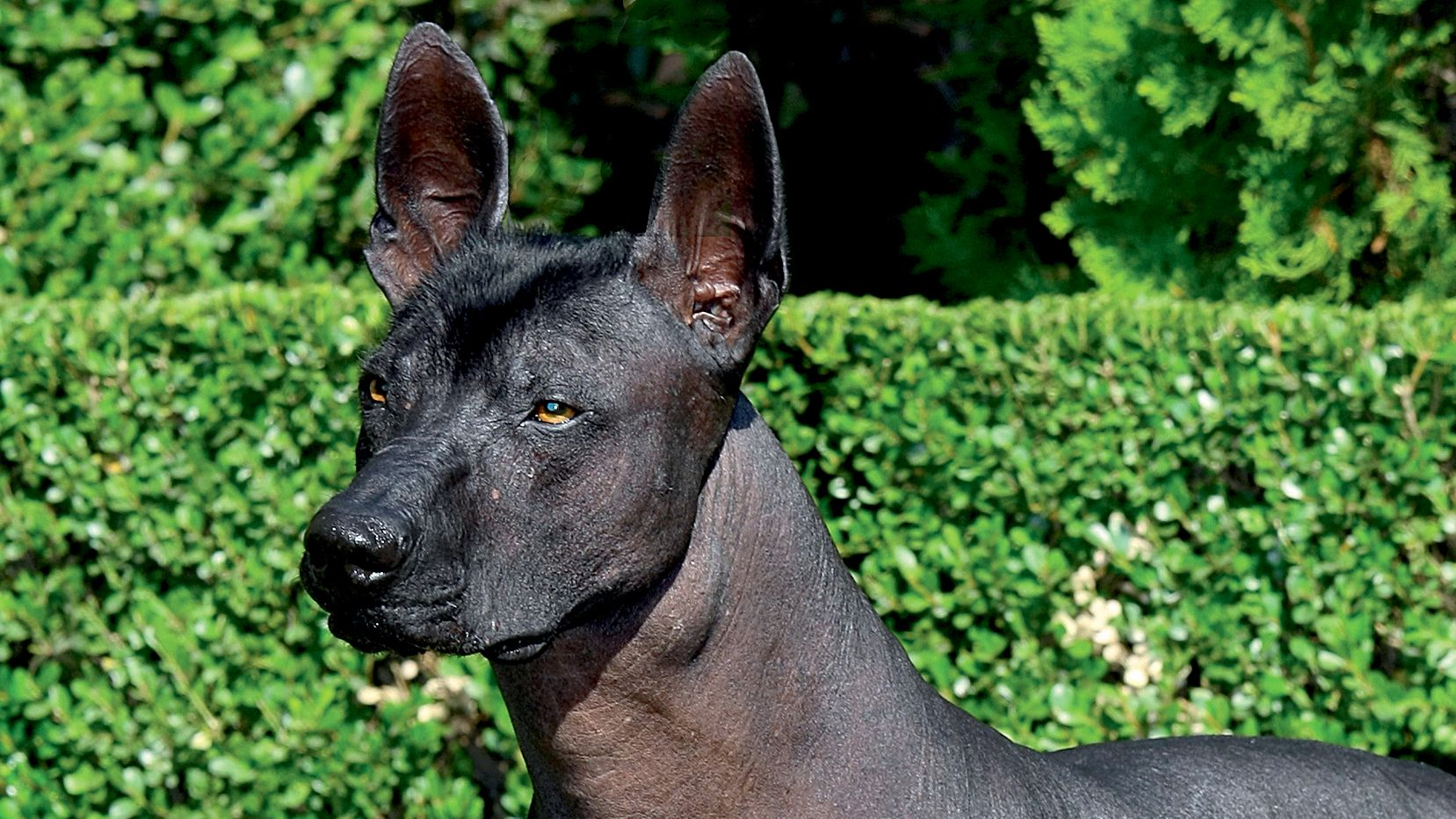
5/7
Things to look out for
From specific breed traits to a general health overview, here are some interesting facts about your Xoloitzcuintle
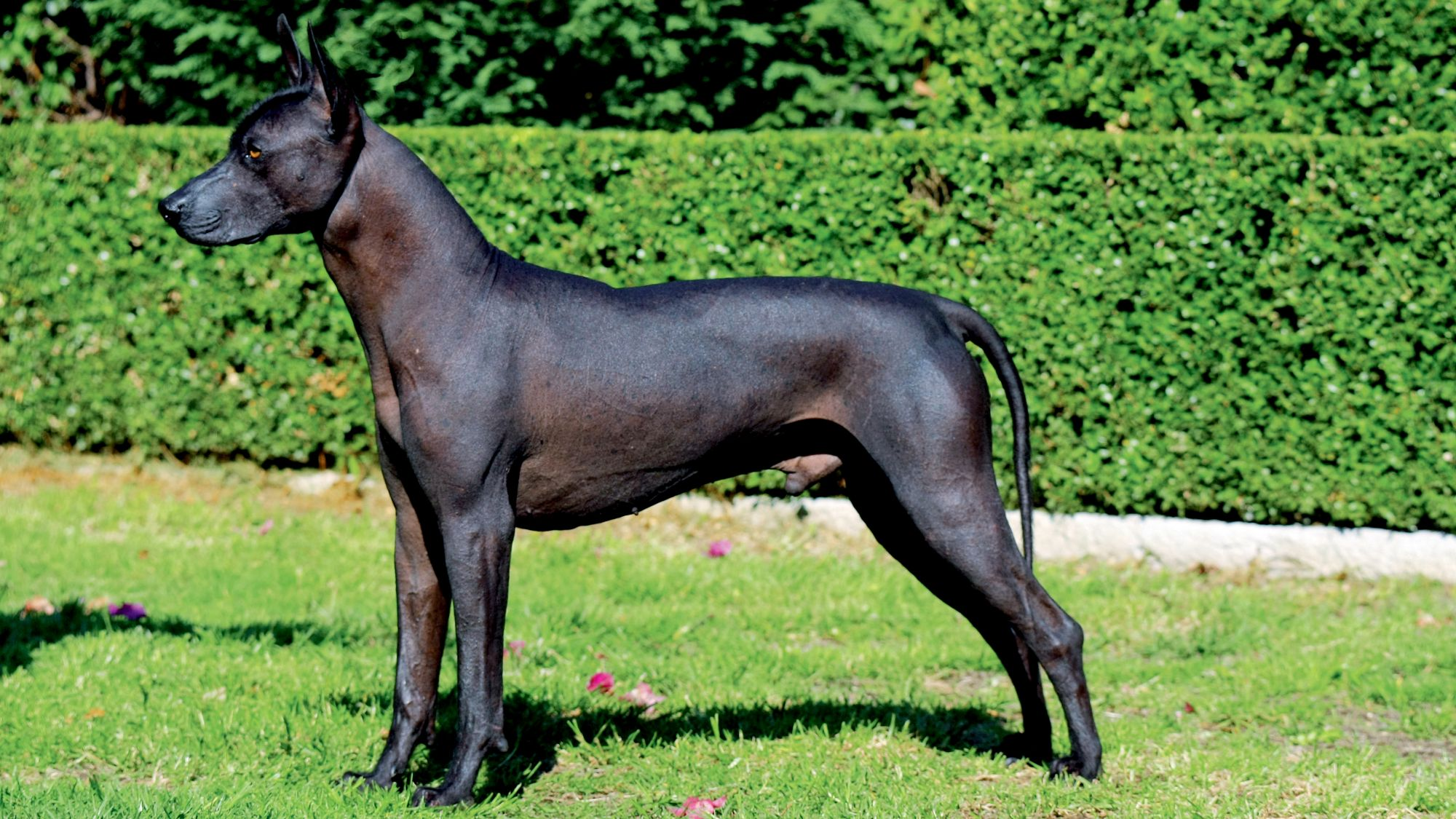
6/7
Caring for your Xoloitzcuintle
Grooming, training and exercise tips
Despite the hairless Xoloitzcuintle’s lack of a covering, they still need bathing to keep as sanitary as possible. Use your best judgement as to how often to bathe them. Pet-friendly sunscreen is necessary when your dog is outside, especially when the sun is strong, and a doggie coat or sweater in the cold is a good idea for Xoloitzcuintles. Coated Xoloitzcuintle dogs require daily brushing but be aware that adolescent dogs can get acne which should be tended to as it arises. The breed’s nails grow inordinately fast so trim regularly, and brush teeth two or more times per week.Miniature and standard Xoloitzcuintle dogs will need more exercise than the toy, as they are quite powerful and were bred as a watchdog so are used to being outside and active. Two or more daily walks is sufficient, more if you’re up to it. Training your Xoloitzcuintle early is necessary. They can be independent-minded when they want to be but with firm commands, will grow into a well-trained companion. This is a dog that is highly attached to their owner so will respond if they understand what you’re trying to convey.
7/7
All about Xoloitzcuintles
The Xoloitzcuintle breed is actually a much-loved and common dog in their home country of Mexico. With a history that dates back some 3 millennia, the Xoloitzcuintle is here to stay. They were known to be one of the first dogs to be domesticated. Despite being harder to meet in the U.S., they have a fanbase north of the border in the Xoloitzcuintle Club of America.
As far as staying power, the Xoloitzcuintle has cornered the market. This is an ancient breed, who even represented the god Xolotl in Aztec culture. As a result of their dwindling numbers over the last 75 years, the Mexican Canine Federation has made strides to rescue the Xoloitzcuintle breed where necessary. Gaining ground in America, the latest registration with canine clubs counted 6,000 Xoloitzcuintle dogs in their ranks.
translations.feature.breeds.otherbreeds
Read more on this topic

How your dog's nutrition needs change with age

How to adopt a dog

Things to consider before getting a dog
Sources
1 - Veterinary Centers of America https://vcahospitals.com/
2 - Royal Canin Dog Encyclopaedia. Ed 2010 and 2020
3 - Banfield Pet Hospital https://www.banfield.com/
4 - Royal Canin BHN Product Book
5 - American Kennel Club https://www.akc.org/


